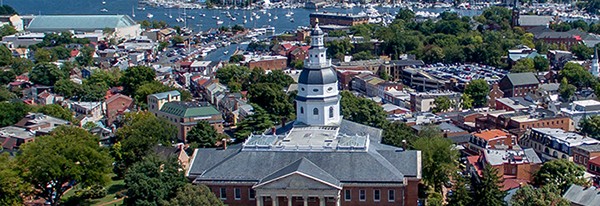Date:
Source: Capital Gazette, Lilly Price
Lt. Kayla Barron never imagined she might one day become an astronaut, let alone be one of the first people to visit Mars, until she served on a submarine.
But the Naval Academy graduate and NASA astronaut-in-training is part of a new generation of astronauts working to do just that. Barron and fellow NASA astronauts who graduated from the Naval Academy, Capt. Kenneth Reightler and Capt. Robert Curbeam, paneled a discussion Sunday on the history of NASA’s space program and its long relationship with their alma mater.
“I realized how similar working on the space station was to working underwater in a submarine,” said Barron, who graduated from the Naval Academy in 2010 with a degree in systems engineering and earned her Master’s in nuclear engineering from the University of Cambridge.
Barron was selected to join a team of 12 astronaut candidates from a record-breaking pool of over 18,300 applications. NASA is currently working to send its first woman and another man to the moon by 2024. The moon mission aims to act as a first step in sending astronauts to Mars in the next 10 years.
The panel Sunday comes on the heels of NASA’s first all-woman spacewalk last month. Barron is one of six women astronauts who attended the Naval Academy, including Kathryn Hire and Wendy Lawrence. For the next generation of Naval Academy students or women who aspire to become astronauts, Barron advises them to “Work hard and never close doors on yourself.”
The Naval Academy graduate credited the institution for supplying her with the tools to navigate complex and dangerous situations in an efficient, team-oriented way.
“These challenges are so big and the machinery we use to operate in space or underwater is really complicated that no one person could do it on their own,” Barron said.
Fifty-four NASA astronauts have come out of the Naval Academy, representing more graduates than any other college or university. Every space flight program in history, except for one flight, has had a Navy graduate on board, according to Valerie Neal, space history curator at the Smithsonian National Air and Space Museum.
“There’s an extraordinary and remarkable legacy from this institution,” Neal said.
Reightler received his bachelor’s degree in aerospace engineering from the Naval Academy, where he is now a distinguished professor of aerospace engineering. He is also a graduate from the Naval Test Pilot School. Reightler went on to pilot two Discovery space shuttle missions — including the first joint US and Russian space shuttle mission — and has logged over 327 hours in space.
While in test pilot school during his 23-year Navy career, Curbeam visited the NASA Johnson Space Center and spoke with astronauts. His interactions with them inspired him to apply to the program and jump start his NASA career. Now retired, Curbeam has clocked 901 hours in space and went on seven space walks. Curbeam, who got his bachelor’s and master’s degrees from the Naval Academy, helped build the International Space Station.
Barron was also motivated to apply to the NASA program after meeting Naval Academy graduates who went on to be in the space program. After an initial conversation with Kathryn Hire, an astronaut who served in the shuttle program and on the space station, Barron realized the connections between working as a submarine officer and working in space. Barron is waiting to receive a flight assignment when she graduates in 2020.


